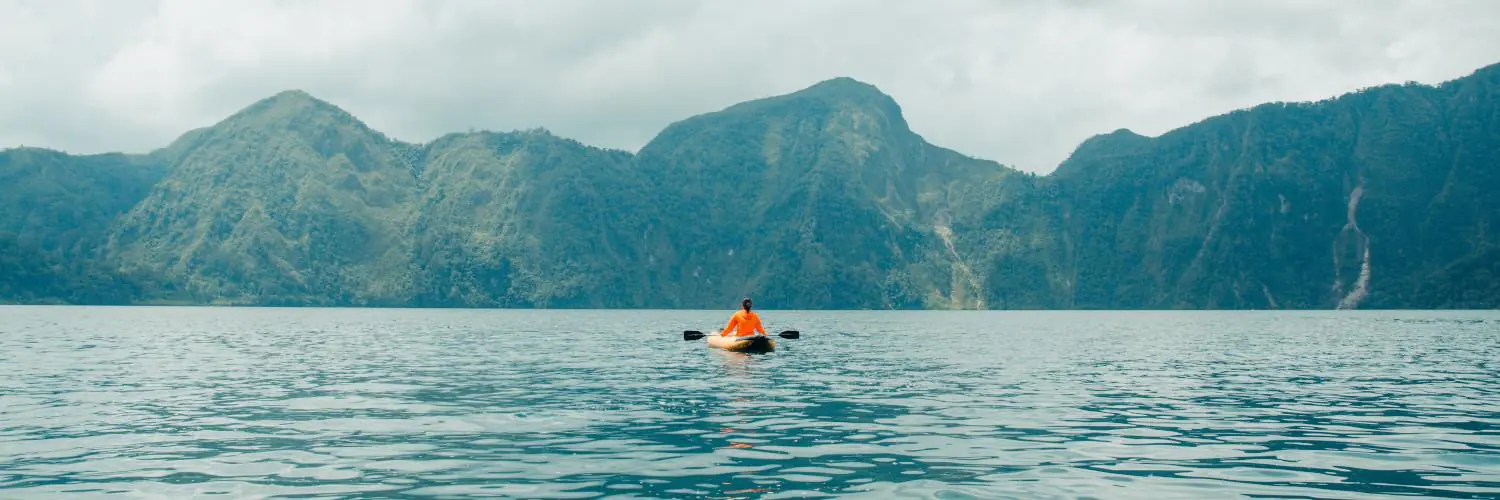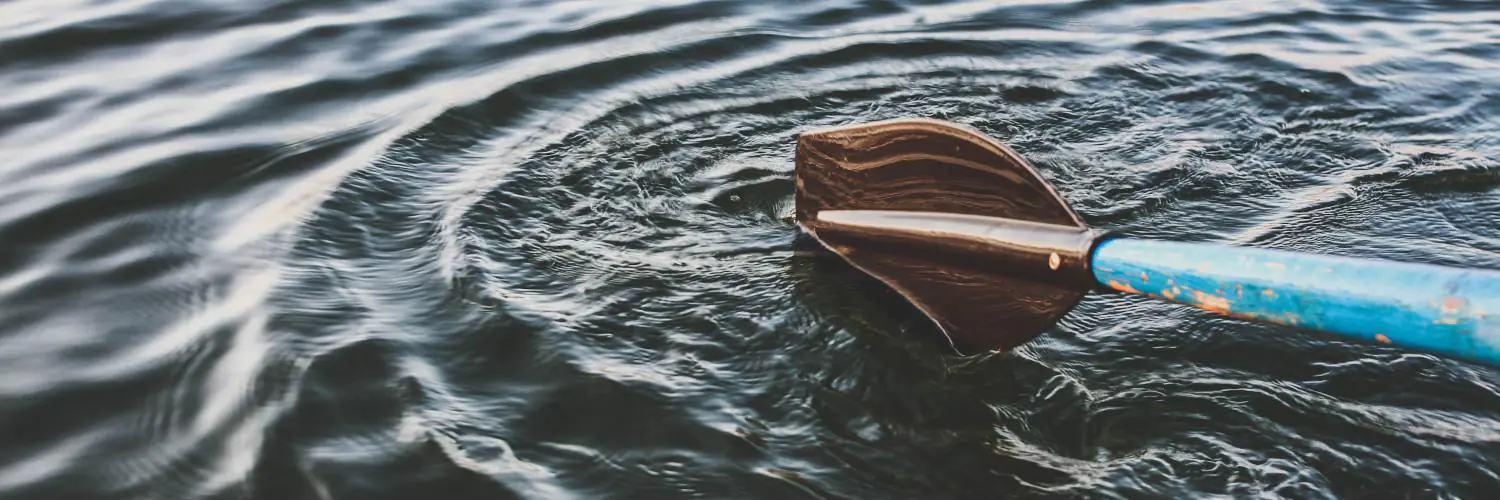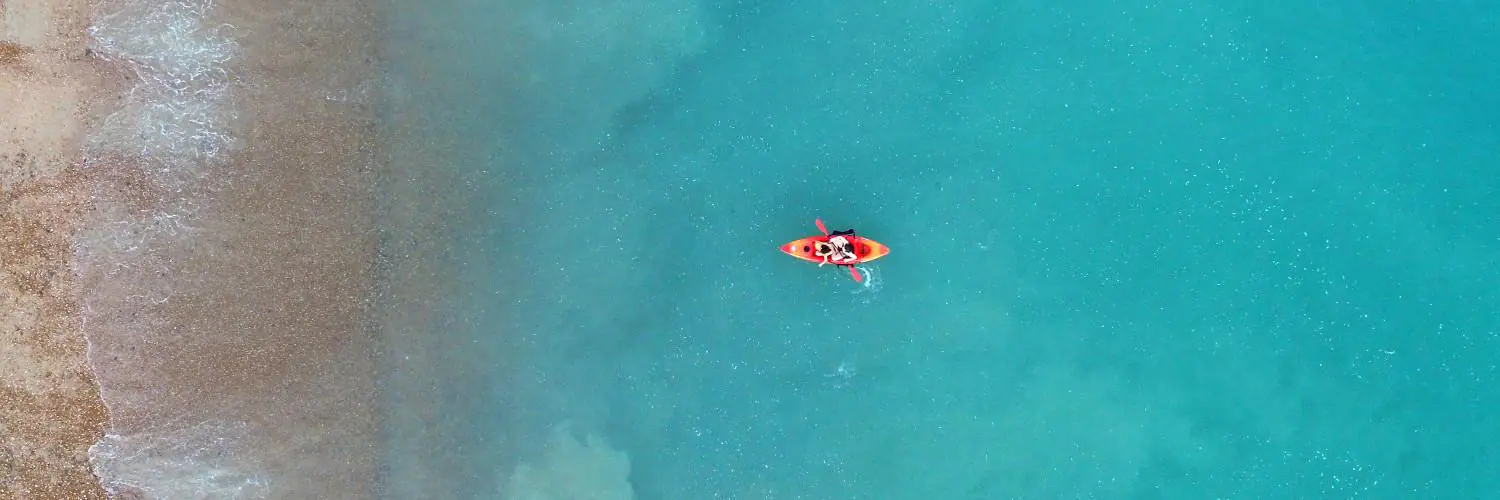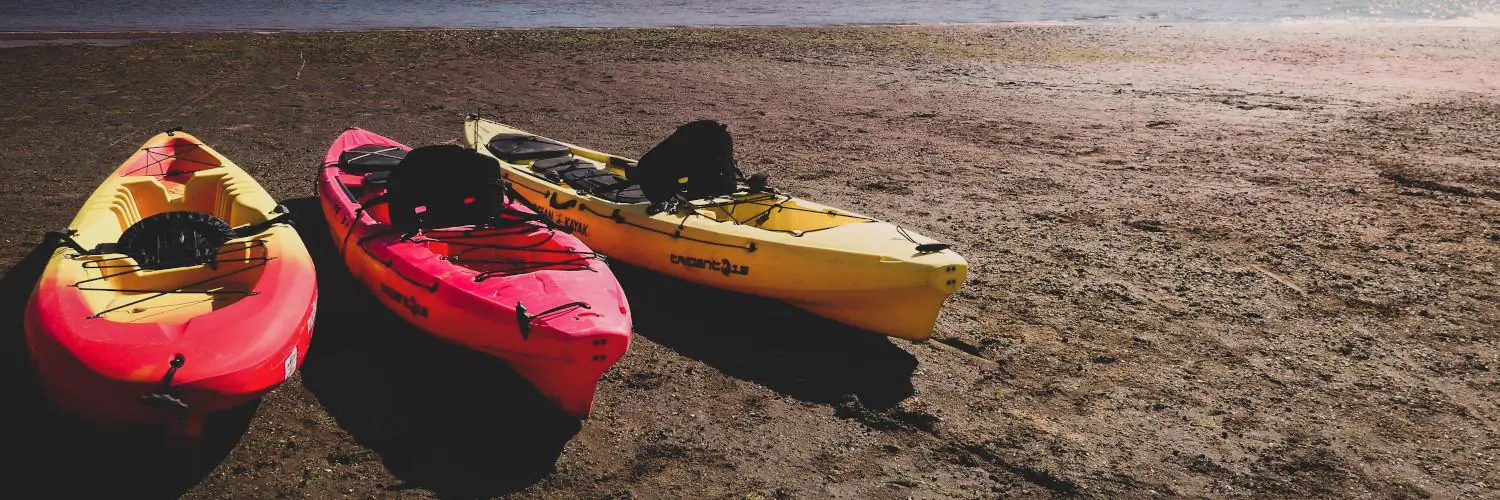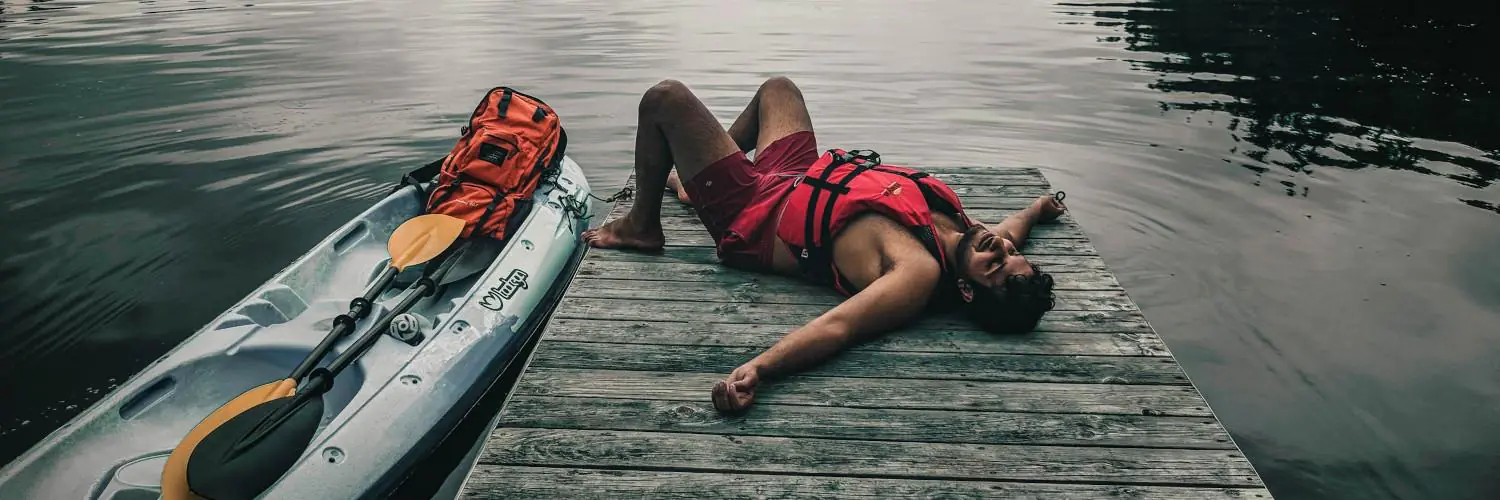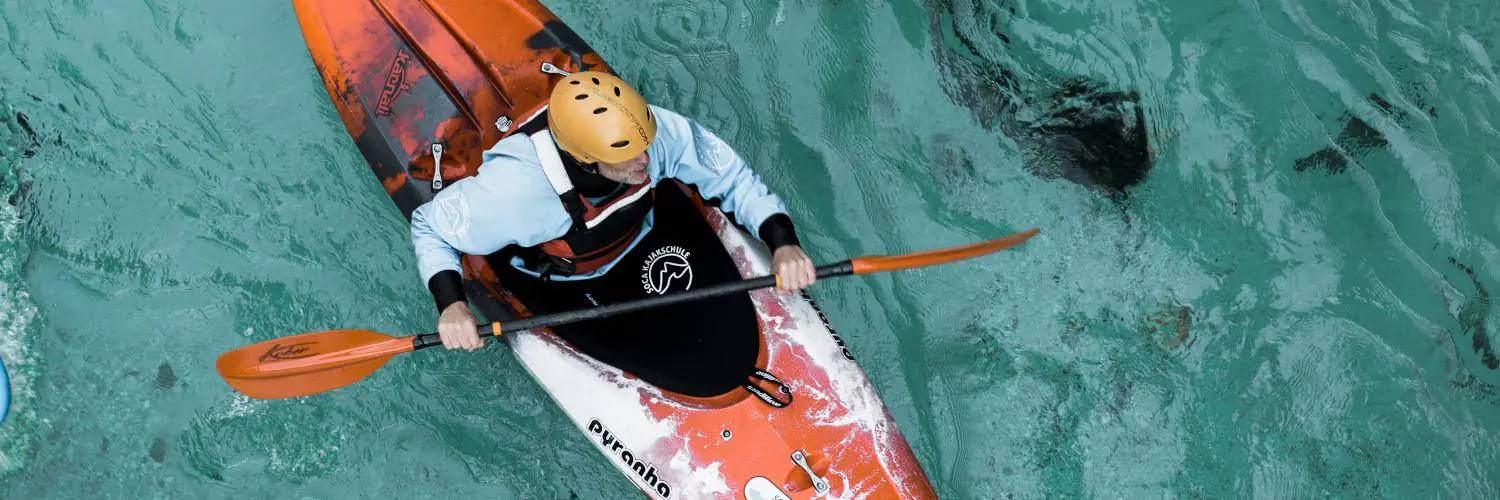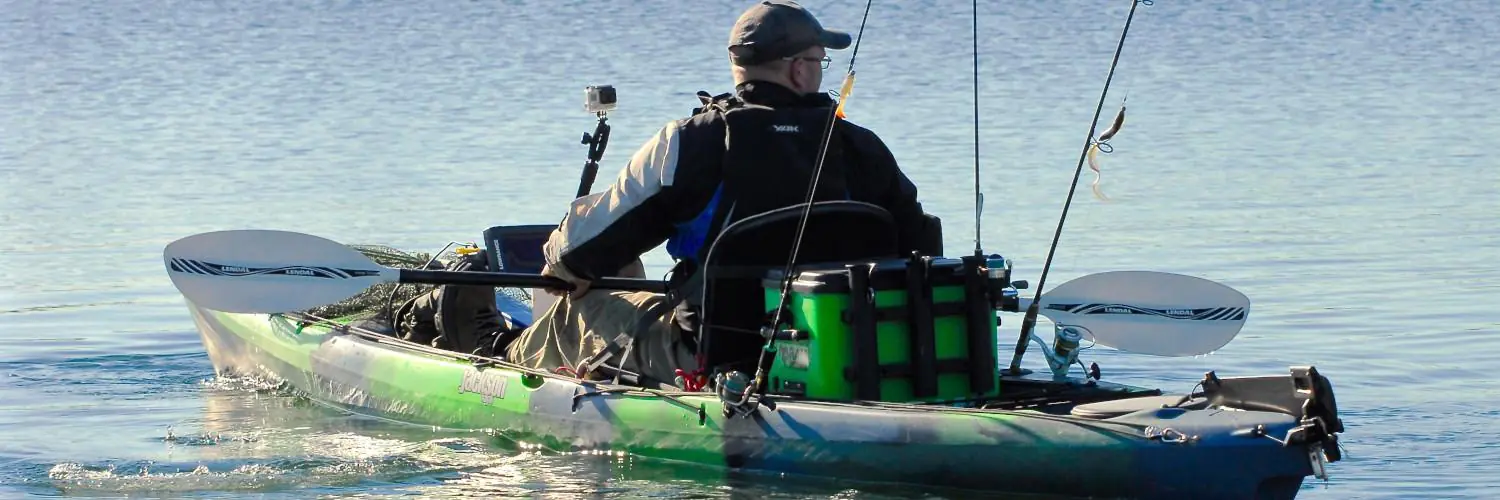Bass fishing from a kayak offers an exciting and affordable way to get on the water and catch fish. A properly set up fishing kayak can make the experience even more enjoyable and productive. The key elements of a good bass fishing kayak setup include a stable boat, rod holders, storage for gear, and fish-finding electronics.
Kayak choice is crucial for bass fishing success. Look for a wide, stable kayak that allows for comfortable casting and fighting fish. Many anglers prefer sit-on-top kayaks with raised seats for better visibility. Adding rod holders keeps rods secure and within easy reach while paddling or fighting a fish.
Storage is important in a bass fishing kayak. Tackle boxes, coolers, and dry bags can be strapped down in the kayak to keep gear organized. Some kayaks have built-in storage compartments. A fish finder or depth finder can be a big help for locating bass habitat and structure. With the right setup, kayak anglers can access productive fishing spots that larger boats can’t reach.
Table of Contents
Choosing the Right Kayak for Bass Fishing
Picking the perfect kayak for bass fishing can make or break your time on the water. The right kayak improves stability, storage, and fishing success.
Types of Fishing Kayaks
Sit-on-top kayaks are popular for bass fishing. They offer good stability and easy access to gear. Anglers can stand up to cast with less worry about tipping over.
Sit-inside kayaks provide more protection from water and weather. They work well in cooler climates or rougher waters. These kayaks can be harder to get in and out of while fishing.
Pedal-driven kayaks let anglers move without using their hands. This frees up arms for casting and reeling. Pedal kayaks tend to be pricier but offer hands-free movement.
Key Features to Look For
Stability is crucial for bass fishing kayaks. Wider hulls help prevent tipping when casting or reeling in fish. Look for kayaks at least 30-36 inches wide for good stability.
Storage space matters for holding rods, tackle, and caught fish. Check for built-in rod holders, gear tracks, and fish storage areas. Some kayaks have livewells to keep bait or catches fresh.
Comfort features like adjustable seats and foot rests help on long fishing trips. Padded seats with back support reduce fatigue. Adjustable foot rests fit different leg lengths.
Understanding Water Conditions
Calm lakes and ponds suit most fishing kayaks. Wider, more stable designs work well here. Anglers can focus on features like storage and comfort.
Rivers with currents need more maneuverable kayaks. Look for designs with good tracking to stay on course. Shorter kayaks turn easier in moving water.
Large, open waters call for longer kayaks with better speed. These cut through waves more easily. Consider kayaks with sealed hatches to keep gear dry in choppy conditions.
Essential Kayak Equipment for Bass Fishing
The right gear can make or break a kayak bass fishing trip. A few key items will keep you safe, comfortable, and ready to reel in the big ones.
Fishing Rod Holders
Rod holders are a must-have for any fishing kayak. They keep rods secure while paddling and free up your hands. Most kayaks have built-in holders, but extra ones can be added.
Look for holders that can be adjusted to different angles. This lets you set up multiple rods for trolling. Flush-mount holders sit flat on the deck. They’re great for storage but can be hard to reach while seated.
Ram mounts are very popular. They clamp onto the kayak and can be moved around. This gives you more options for rod placement.
Kayak Paddle and Paddling Efficiency
A good paddle is crucial for a successful day on the water. Look for a lightweight paddle made of carbon fiber or fiberglass. These materials reduce arm fatigue on long trips.
The right paddle length depends on your height and the width of your kayak. A general rule is to add 8 inches to your height. This gives you a starting point for paddle size.
Feathered blades can boost paddling efficiency. They cut through the wind better than flat blades. Many paddles let you adjust the feather angle to suit your style.
Life Jackets and Safety
A life jacket, or PFD (personal flotation device), is the most important safety item. It’s required by law in most places. Choose a PFD made for kayak fishing. These have high backs that won’t interfere with your seat.
Look for jackets with lots of pockets. They’re great for storing small items like pliers or lures. Some even have built-in rod holders.
Bright colors make you more visible to other boaters. This is especially important in low light or bad weather. Always wear your PFD, even if you’re a strong swimmer.
Setting Up Your Kayak for Maximum Fishing Efficiency
A well-organized kayak setup can make or break your fishing trip. The right gear placement, electronics, and accessories will help you catch more fish and enjoy your time on the water.
Organizing Your Gear
Put frequently used items within easy reach. Install rod holders near your seat for quick access. Use tackle trays to keep lures and hooks organized.
Store extra gear in waterproof bags or containers. Place these in the kayak’s storage areas. Keep heavier items low and centered for better stability.
Add bungee cords or mesh pockets to secure loose items. This prevents gear from sliding around or falling overboard. A small cooler can hold drinks, snacks, and caught fish.
Mounting Fish Finders and Electronics
A fish finder helps locate underwater structures and fish. Mount it where you can easily see the screen while paddling or fishing.
Use a RAM mount or similar system for adjustability. This lets you change the angle or remove the unit when needed.
Install a waterproof battery box to power your electronics. Place it in a dry, secure spot in the kayak. Run wires neatly along the inside of the hull to avoid tangles.
Consider adding a GPS unit for navigation. This can help you find and mark good fishing spots.
Adding a Trolling Motor
A trolling motor can extend your fishing range and save energy. Choose a model designed for kayaks with the right thrust for your boat size.
Mount the motor on the bow or stern. Bow mounts offer better control but may interfere with paddling. Stern mounts are easier to install but can affect steering.
Use a deep cycle marine battery to power the motor. Secure it in a waterproof box and balance its weight in the kayak.
Add a foot control system for hands-free operation. This lets you steer while fishing. Make sure all wiring is waterproof and properly secured.
Advanced Bass Fishing Techniques and Tips
Mastering advanced techniques can greatly boost your bass fishing success from a kayak. These methods focus on precision, strategy, and adapting to conditions.
Casting Strategies
Accuracy is key when casting from a kayak. Practice pinpoint casts to hit specific targets like logs or weed edges. Use a sidearm cast to get under overhanging branches. For longer casts, try the roll cast technique.
Learn to skip baits under docks and other structures. This takes practice but can reach bass in hard-to-access spots. When fishing windy conditions, cast into the wind for better control and presentation.
Try pitching and flipping techniques for close-quarters fishing around cover. These allow for quiet, precise bait placement without spooking fish.
Lure and Bait Selection
Choose lures based on water clarity, depth, and bass behavior. In clear water, use natural colors and smaller lures. For murky water, opt for larger, brighter lures to increase visibility.
Soft plastics like worms and creature baits work well for finesse fishing. Rig them weedless to fish heavy cover. Topwater lures can be deadly in low light conditions or when bass are feeding aggressively.
Crankbaits and spinnerbaits cover water quickly to locate active fish. Jigs excel for probing deep structure and heavy cover. Always have a mix of lures to adapt to changing conditions.
Reading Water and Weather Conditions
Pay attention to water temperature. Bass are more active in 55-75°F water. In colder water, slow down your presentation and fish deeper. During hot weather, target shady areas and deeper water.
Look for areas where currents meet, like points or channel edges. These spots often hold baitfish and bass. Wind can concentrate baitfish along shorelines, attracting bass.
Barometric pressure affects bass behavior. Falling pressure often triggers feeding, while high pressure can make bass less active. Adjust your tactics accordingly for the best results.
Maintaining Your Fishing Kayak and Gear
Taking care of your fishing kayak and gear keeps them working well for a long time. Clean your kayak after each trip. Use fresh water to rinse off salt, sand, and dirt.
Dry the kayak completely before storing it. This stops mold and mildew from growing. Store your kayak out of direct sunlight to prevent damage.
Check your kayak regularly for cracks or damage. Fix small issues right away to avoid bigger problems later.
Clean and oil your fishing reels after use. This keeps them smooth and working well. Store lures and hooks in a dry tackle box to prevent rust.
Inspect your life jacket and other safety gear often. Replace worn or damaged items to stay safe on the water.
Organize your gear neatly in the kayak. This makes fishing more efficient and fun. Use waterproof bags to keep important items dry.
By taking good care of your kayak and gear, you’ll have many great fishing trips ahead.

